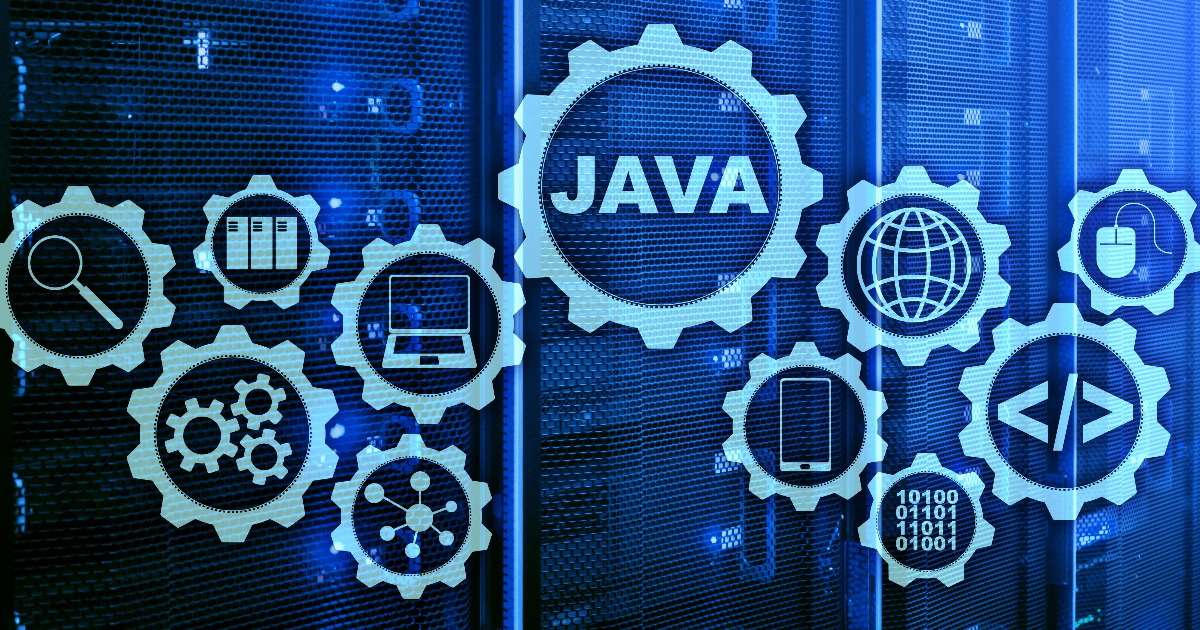Key Takeaways
- Ransomware is increasingly aimed at storage infrastructure, with ninety-six percent of attacks directed at backup systems; in ninety-four percent of incidents, data exfiltration takes place.
- Technologies like Object Lock and WORM (Write-Once-Read-Many) are essential for maintaining data immutability, preventing unauthorized changes or deletions, even by insiders.
- AI-enhanced storage platforms can detect ransomware activity in real-time with up to ninety-nine percent accuracy by monitoring file behavior and entropy.
- Enterprises with layered ransomware-resilient architectures recover data up to three hundred and fifty times faster compared to those using conventional backups alone.
- Emerging solutions such as Zero Trust storage frameworks and quantum-resistant encryption methods are becoming critical for sustained ransomware defense.
What Is Ransomware?
Ransomware is malicious code designed to lock you out of your own data, typically by encrypting files or entire systems and then demanding payment, usually in cryptocurrency, to restore access. Victims are left with impossible choices: pay the ransom and hope the attacker delivers the key, or lose access permanently, sometimes along with the public exposure of stolen data.
This isn’t just about frozen spreadsheets or lost vacation photos. Modern ransomware campaigns take down hospitals, financial institutions, and global enterprises. They shut off entire supply chains and city services. Increasingly, they aim not only to lock data but also to destroy recovery paths, most notably by targeting backup systems.
Attack vectors commonly include phishing emails armed with malware-laden attachments or links, exploitation of software vulnerabilities, stolen or weak credentials, and exposed remote desktop services. Increasingly, attackers exfiltrate data before executing encryption, employing double and triple extortion schemes that threaten to release stolen information publicly, exacerbating pressure on victims to pay.
Because ransomware encryption schemes use cryptographically strong ciphers, decryption without keys is virtually impossible, making resilient, tamper-proof backup and storage strategies indispensable in modern defense plans.
In the following sections, we’ll explore how the battle against ransomware is shifting from traditional security measures to innovations in the storage layer, where we will also see some real examples of how leading companies are transforming data infrastructure into an active line of cyber defense.
Turning the Data Layer Into a Cybersecurity Stronghold
Once a digital nuisance confined to phishing scams and pop-up ransom notes, ransomware has evolved into a multi-billion-dollar industry powered by organized crime, nation-state actors, and dark web monetization schemes. What’s most alarming? The new front line in this battle isn’t your endpoint antivirus or network firewall; it’s your storage.
The Growing Impact of Ransomware and Why Storage Must Evolve
Over recent years, ransomware has shifted from opportunistic malware to sophisticated, targeted campaigns often orchestrated by organized cybercrime groups and nation-state actors. Industry data reveals troubling trends:
- Over ninety-six percent of ransomware attacks now target backup repositories directly, aiming to eliminate all recovery options.
- Average ransom demands have escalated dramatically, exceeding five million dollars per incident in 2025 (Cybersecurity Ventures 2025 Report).
- Organizations typically endure downtime of twenty-one to twenty-four days following an attack due to complex recovery processes (ransomware recovery statistics).
- Only a small minority, roughly seven percent, manage full restoration within twenty-four hours (industry survey).
These statistics underscore that conventional endpoint antivirus solutions, network firewalls, and basic backup routines no longer suffice. The storage layer, historically a silent vault for data, must transform into an active participant in cybersecurity, an immutable, isolated, and intelligent defender that can withstand direct ransomware assault and enable rapid recovery. Among the emerging strategies, immutable storage stands out as a foundational pillar ensuring data remains uncompromised even when facing today’s most advanced ransomware threats.
Immutable Storage: Creating the Foundation for Ransomware Defense
What Makes Storage Immutable?
The cornerstone of ransomware resilience is immutability: data written to storage cannot be altered or deleted ever. This write-once-read-many (WORM) capability means backup snapshots or data blobs are locked for prescribed retention periods, impervious to tampering even by attackers or system administrators with elevated privileges.
Hardware and software enforce this immutability by preventing any writes or deletes on designated volumes, snapshots, or objects once committed, creating a “logical air gap” of protection without the need for physical media isolation.
Comparisons of Immutable Storage by industry leaders.
Across the technology landscape, here are some examples of technology integration by large companies into their storage platforms:
| Vendor | Immutable Storage Technology | Key Feature and Approach |
|---|---|---|
| NetApp | SnapLock (integrated in ONTAP OS) | Locks backup files so they can’t be changed or deleted for a set time, keeping data safe from tampering. |
| Pure Storage | SafeMode | Blocks any deletion or modification of backup snapshots. This is even true for admin accounts. |
| Cohesity | Immutable Snapshots | Creates unchangeable backups. The storage cannot be altered or erased to ensure recovery after an attack. |
| IBM | FlashCore | Uses hardware to make backup copies unchangeable and guards against ransomware at the storage level. |
| Veeam | Object Lock | Prevents any edits/deletions to backed-up data in object storage during a “lock” period. |
| CTERA | Immutable Folder Lock | Applies a “write-once” rule to folders so that stored files can’t be changed or removed until a specified time passes. |
NetApp’s SnapLock is emblematic, enabling compliance-grade snapshot locking that forbids modifications within retention windows, effectively “vaulting” backups against ransomware. SnapLock, combined with SnapVault, facilitates replicating immutable snapshots across clusters for multi-layer protection.
This approach described above enables administrators to roll back entire file systems or volumes to their pre-attack state in minutes. It is better than a legacy method where the only option is to take tape restores, which can take days.
The Hyperscaler Perspective: Cloud Providers Championing Immutability
Cloud giants and leaders in managed storage services, such as Amazon Web Services (AWS) and Microsoft Azure, have made immutable backups a key component of their storage platforms. AWS offers S3 Object Lock that can enforce a write-once, read-many (WORM) model to ensure data can’t be altered or deleted once written. It also supports multi-region replication and legal holds to help meet compliance and security needs. Similarly, Azure Blob Storage provides protection through immutability policies, including time-based retention and legal hold support features, which are designed to guard against ransomware and insider threats. These features are useful for the Sarbanes-Oxley Act (SOX) as well (a U.S. federal law), which requires publicly traded companies to maintain accurate financial records and provide transparent financial reporting to protect investors and prevent fraud.
Behind the scenes, these hyperscalers build for durability by replicating data across geographically distributed datacenters. This architecture ensures backups remain intact even if parts of the network are compromised, improving recovery speed and overall resilience.
Embedded Hardware Innovations: SSD-Level Defense
Moving deeper, efforts are underway to harden storage hardware directly. Technologies such as FlashGuard, explored experimentally by IBM and Intel collaborations, embed rollback capabilities within SSD controllers. By preserving prior versions of data pages on-device, FlashGuard can quickly revert files corrupted or encrypted by ransomware without network or host dependency. In lab trials, a 1TB SSD restored 4GB of encrypted data in just thirty seconds with negligible performance overhead (IBM Research).
Though not widespread in production, these capabilities signal a future where storage devices autonomously resist ransomware impact, a powerful complement to immutable snapshotting. While these cutting-edge hardware-level protections offer rapid recovery and autonomous resilience, organizations also consider complementary isolation strategies like air-gapping to create robust multi-layered defense boundaries against ransomware threats.
Air-Gapping: An Essential Backup Isolation Strategy
Physical or logical air-gapping isolates backup copies from ransomware’s reach, providing a fail-safe recovery source.
Physical Air Gap
This traditional approach disconnects backup media such as tape cartridges or removable drives from networks, creating a physical barrier that ransomware cannot cross. Organizations with stringent regulatory and compliance requirements, including government agencies and global banks, maintain offline tape archives as their ultimate ransomware recovery fallback. The tradeoff lies in operational complexity, slower restores, and media degradation risk over time.
Logical Air Gap
To combine immediacy with protection, logical air gaps use software-enforced immutability and controlled access, isolating backup snapshots within the same infrastructure but restricting modification. NetApp SnapLock and Cohesity FortKnox, for example, offer cloud-backed isolated immutable vaults that operate as “virtual air gaps,” enforcing strict access controls, immutable retention, and encrypted storage (Cohesity FortKnox). Logical air gaps enable near-instant recovery while retaining ransomware-proof isolation, addressing shortcomings of physical air gaps without losing data accessibility.
Cloud Air Gap: Scalable and Agile Isolation
Cloud storage providers can simulate air-gapped storage by revoking or tightly limiting credentials post-upload to immutable object storage vaults. This approach retains the benefits of immutability, geographic redundancy, and scale, facilitating fast restores and near-zero recovery point objectives (RPOs).
Enterprises are increasingly adopting this model due to cost-effectiveness and agility, further accelerated by the collaboration of cloud storage vendors with dedicated backup and security platform providers.
Real-Time Anomaly Detection: Proactive Ransomware Stopping Power
Immutable backups guarantee a path to recovery but cannot prevent damage occurring during an attack. Rapid identification and mitigation of ransomware’s encrypting activity are therefore vital.
Hardware-Assisted Storage I/O Monitoring
Ransomware detection is evolving from host-centric antivirus to host-independent storage monitoring. Platforms like SHIELD, developed in research labs, leverage FPGA-accelerated SATA controllers capturing storage I/O and metadata changes directly, unaffected by compromised OS kernels (SHIELD research).
This tamper-proof telemetry captures nuanced ransomware behaviors, such as unusual synchronous write bursts and metadata alterations, signaling an ongoing ransomware attack with high fidelity and near-zero latency.
Machine Learning-Driven Behavioral Analytics
Behavioral detection systems build on extensive ransomware and benign application datasets (like the RanSAP and RanSMAP traces) to train machine learning classifiers. These systems analyze storage I/O patterns, looking at write entropy (randomness), read/write ratios, and burst frequencies to distinguish ransomware’s anomaly signature from legitimate high-volume I/O workloads. For instance, a RandomForest classifier can detect ransomware’s characteristic burst of highly random encrypted writes among otherwise predictable traffic flows, triggering early alerts or automated protective actions (RanSAP dataset).
Kernel-Level Interception and Self-Healing File Systems
Solutions such as Ranker integrate kernel hooking to monitor file system-level operations, enabling early recognition of suspicious manipulations preceding full-scale encryption. Meanwhile, ShieldFS, a self-healing filesystem driver, can automatically roll back suspicious changes in real time, effectively neutralizing ransomware damage mid-attack (Ranker & ShieldFS studies).
These approaches hold promise for continuous data protection without dependence on periodic snapshotting intervals.
Hardware-Embedded Detection and Recovery
Emerging SSD controllers embed ransomware-aware technologies similar to RSSD (Ransomware-Secure SSD), which log every I/O write in secure hardware buffers and maintain historical data versions. This logging enables forensic audit trails and fast rollback post-infection, proving critical to minimizing data loss even in the event of host compromise (RSSD whitepaper).
How Big Tech and Leading Vendors Tackle Ransomware Storage Defense
| Vendor | Technologies & Methods | Enterprise Usage Insights |
|---|---|---|
| NetApp | SnapLock immutable snapshots, SnapVault replication, AI/ML anomaly detection | Adopted by 70% of Fortune 100; industry-leading rapid recovery with >90% backup success post-attack (NetApp Case Studies). |
| Cohesity | Immutable backups, FortKnox isolated vaults, UBA analytics | Recognized in the Gartner Magic Quadrant; strong presence in federal agencies and healthcare sectors (Gartner Report). |
| IBM FlashSystem | FlashCore immutable snapshots, AI-driven detection models | Favored by banking and insurance verticals for hardware-level resilience and compliance (IBM Financial Services). |
| Microsoft Azure | Immutable blob storage, Defender ATP, Sentinel SIEM platform | Secures millions of workloads globally; automates fast mitigation with petabytes of telemetry leveraged for AI detection (Microsoft Security Blog). |
| AWS | S3 Object Lock, Backup Vault, GuardDuty anomaly detection | Powers numerous large enterprise cloud workloads, demonstrating rapid and scalable ransomware recovery (AWS Security). |
| Pure Storage | SafeMode immutable snapshots with snapshot scheduling | Used by high-performance computing and media industries for secure, high-speed data recovery (Pure Storage Use Cases). |
These providers reflect a shared strategy of layered defenses combining immutability, AI-powered anomaly detection, and isolated backup infrastructure, balanced with recovery orchestration.
Here is a feature comparison list of the top vendors:
| Vendor | AI/ML Detection | Immutable Snapshots | Detection Time | Recovery Guarantee |
|---|---|---|---|---|
| NetApp ONTAP | Yes (ARP/AI) | Yes (SnapLock) | <1 min | Yes |
| IBM FlashSystem | Yes (FlashCore) | Yes | <1 min | No |
| Pure Storage | No | Yes (SafeMode) | N/A | Yes (SLA) |
| Cohesity | Yes | Yes | Real-time | No |
| Veeam | No | Yes (Object Lock) | N/A | No |
| OpenZFS | No | Yes | N/A | No |
| CTERA | Yes | Yes | Near real-time | No |
| Object First Ootbi | No | Yes | N/A | No |
Lessons from Tech Giants
What we have covered so far shows how building strong ransomware defenses means more than just backups; it requires a mix of immutable storage, smart hardware like SSD-level defenses, AI-powered threat detection, and clever isolation techniques, strengthening ransomware resilience. These pieces come together to turn storage from a passive place where data sits into an active part of your security strategy that helps you bounce back quickly and stay protected. The following section looks at how some of the big tech companies put these ideas into practice, sharing some real-world lessons and approaches that can help any organization stay one step ahead of ransomware attackers.
- Microsoft closely integrates endpoint, network, cloud, and storage security under Defender, using global behavioral analytics to preempt ransomware. The company emphasizes recovery validation, orchestrated incident response, and continuous employee training.
- Amazon AWS seamlessly blends immutable storage with network firewalling, identity access management, and AI detection services like GuardDuty, enabling auto-remediation and post-attack rollback with minimal downtime.
- Google leverages Site Reliability Engineering (SRE) principles to replicate immutable backups globally and integrate AI-based threat hunting within storage and compute layers, minimizing both attack surface and recovery time.
Challenges and Future Directions in Ransomware-Resilient Storage
So far, we have seen how top tech companies and leading storage platforms are using a mix of smart strategies. These real-world approaches offer a good blueprint for stronger security and ease of recovery. But as promising as these solutions are, putting them into practice isn’t always straightforward. There are real challenges that every organization faces, from keeping performance high to navigating the ever-changing tactics of cyber attackers. Let’s dig into the roadblocks and future trends that shape what’s next for ransomware-resilient storage:
Performance vs. Protection comes into play immediately. While immutable snapshots and real-time detection layers provide essential guardrails against data loss, they inevitably introduce latency and throughput overhead. Without careful tuning, these protective mechanisms can become double-edged swords – shielding the system while at the same time slowing down critical production workloads.
The reliance on AI brings its own challenges. False Positives in AI Detection are common, as machine learning models sometimes misinterpret legitimate high-volume operations such as backups or large file edits as malicious behavior. This misclassification doesn’t just generate noise; it risks overwhelming teams with unnecessary alerts and disrupting operations. To stay effective, detection models must be continuously trained and adapted to reflect the diversity of real-world workloads.
Hardware solutions also carry trade-offs. Hardware Buffer Limits are a prime example: rollback buffers at the SSD level can only hold so much. They are invaluable for quick recovery but cannot be the sole line of defense. To overcome these limits, organizations must adopt multi-tiered strategies that combine local rollback with durable, off-device immutable storage.
Of course, technology is only part of the story. Cost and Integration Complexity present practical hurdles, particularly for smaller organizations. Implementing sophisticated defenses – whether FPGA accelerators, specialized SSD firmware, or cloud-based immutable vaults – requires not just upfront capital but also ongoing operational resources. For many, this makes adoption as much a financial challenge as a technical one.
Finally, the landscape itself is shifting. Adversary Evolution means defenders can never afford to stand still. Ransomware groups are no longer relying on blunt-force encryption alone; they now employ stealthy partial encryptions, in-memory techniques, and even supply chain compromises. This forces organizations to move beyond static defenses and toward layered, adaptive protection strategies that anticipate and respond to multiple threat vectors at once.
Looking Forward: Towards Smarter, Integrated Storage Security
Even with all the hurdles, the ransomware defense world keeps moving forward. Industry leaders and innovators are constantly working on new ways to make storage smarter, faster, and even more secure. The next wave of advances promises to unlock many possibilities that could change how organizations everywhere think about protecting their critical data. Here’s a look at what’s on the horizon for future storage security.
Embedded AI in Storage Hardware
SSD and HDD controllers will increasingly integrate AI inference engines, enabling on-device real-time anomaly detection and protection.
Automated Orchestrated Response
Systems will automatically quarantine suspect workloads, generate immutable snapshots, trigger alerts, and initiate recovery workflows without human intervention, shortening response windows.
Industry Standards and Compliance
Emerging ransomware-resilient storage profiles and compliance frameworks will codify best practices, including self-encrypting drives, immutable firmware, and encrypted audit trails.
Cloud-Native Immutable Vaults
Expansion of managed immutable cloud vault services with blockchain-based audit trails will amplify tamper-proof backup integrity at a global scale.
Collaborative Threat Intelligence
Sharing of ransomware attack data and forensic telemetry across enterprises will improve AI model accuracy and detection agility.
Conclusion: Transforming Storage into a Cybersecurity Frontline
As ransomware threats escalate in frequency, scale, and sophistication, enterprises can no longer rely on traditional endpoint security and reactive backups alone. Turning the storage layer into an active, intelligent defender through immutable backups, isolated vaults, and AI-driven anomaly detection elevates data protection from an afterthought to a cybersecurity imperative.
Organizations that embrace these advanced storage architectures position themselves to detect attacks early, mitigate damage rapidly, and recover fast and with minimum data loss.
Ransomware-resilient storage represents the next frontier in cybersecurity, safeguarding the digital backbone of modern business and critical infrastructure.








